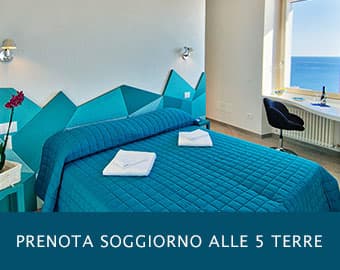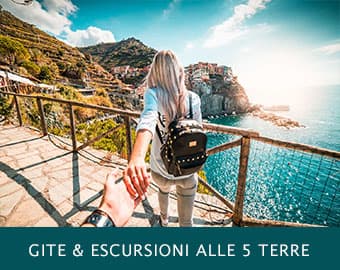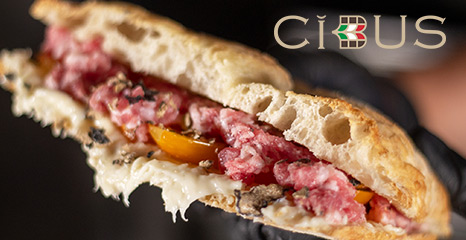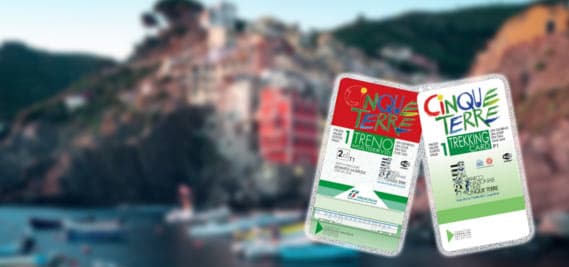Recommended
by CinqueTerre.com
What are the Cinque Terre
 The Cinque Terre represent one of the most pristine and extensive Mediterranean natural and semi-natural areas of Liguria; this is due to mainly historical and geomorphological reasons that have prevented an excessive building expansion and the construction of further main roads (which instead cross and connect the Vara Valley more internally). The activities practiced by man for centuries, and especially viticulture, have contributed to creating a unique landscape in the world, named since 1997 UNESCO World Heritage Site, in which the development of typical and characteristic dry stone walls reaches overall that of famous Chinese wall. This, together with the characteristics of a crystalline sea, valuable architectural evidence, a network of paths among the richest and most enviable in the Mediterranean areas, has made the Cinque Terre an increasingly sought after destination frequented by Italian and foreign tourists. This is not so much the result of a successful promotional campaign as a spontaneous recognition of the uniqueness of a place, of its beauty, of the pleasure that comes from staying there or visiting it even for just one day.
The Cinque Terre represent one of the most pristine and extensive Mediterranean natural and semi-natural areas of Liguria; this is due to mainly historical and geomorphological reasons that have prevented an excessive building expansion and the construction of further main roads (which instead cross and connect the Vara Valley more internally). The activities practiced by man for centuries, and especially viticulture, have contributed to creating a unique landscape in the world, named since 1997 UNESCO World Heritage Site, in which the development of typical and characteristic dry stone walls reaches overall that of famous Chinese wall. This, together with the characteristics of a crystalline sea, valuable architectural evidence, a network of paths among the richest and most enviable in the Mediterranean areas, has made the Cinque Terre an increasingly sought after destination frequented by Italian and foreign tourists. This is not so much the result of a successful promotional campaign as a spontaneous recognition of the uniqueness of a place, of its beauty, of the pleasure that comes from staying there or visiting it even for just one day.
 It is important to note that the Cinque Terre are not identifiable as a classic tourist destination. In particular in Manarola and Corniglia everything has remained as it once was, little adapted to the new tourist vocation of these places. This is undoubtedly the strong point of the Cinque Terre: a different dimension, far from the stresses of the cities and at the same time far from the tourist all-inclusive havens where everything is planned and organized. Naturally this uniqueness requires sacrifices: the difficulty of the movements, the inconvenience of parking, the lack of services, the tiring ups and downs. The Cinque Terre are ultimately not for everyone; not for those who love (and it is also a very respectable point of view) exclusively a comfortable and served holiday; we don't want to run the risk that the tourist can expect something different from reality. However, we know that those who truly love the Cinque Terre would not want them to be different from what they are. Tourism represents the main vocation of the area with agriculture, but one is linked to the other because it is the appeal of the first above all the landscape built over the centuries by farmers with techniques that are slowly being lost. In the fifteenth century the wines of Corniglia and Vernazza were known and appreciated, not only in Rome, but also at the banquets of the nobles of France and England. Now, tourists can search directly for the products of the vine and the olive tree in a beautiful setting of environmental beauty.
It is important to note that the Cinque Terre are not identifiable as a classic tourist destination. In particular in Manarola and Corniglia everything has remained as it once was, little adapted to the new tourist vocation of these places. This is undoubtedly the strong point of the Cinque Terre: a different dimension, far from the stresses of the cities and at the same time far from the tourist all-inclusive havens where everything is planned and organized. Naturally this uniqueness requires sacrifices: the difficulty of the movements, the inconvenience of parking, the lack of services, the tiring ups and downs. The Cinque Terre are ultimately not for everyone; not for those who love (and it is also a very respectable point of view) exclusively a comfortable and served holiday; we don't want to run the risk that the tourist can expect something different from reality. However, we know that those who truly love the Cinque Terre would not want them to be different from what they are. Tourism represents the main vocation of the area with agriculture, but one is linked to the other because it is the appeal of the first above all the landscape built over the centuries by farmers with techniques that are slowly being lost. In the fifteenth century the wines of Corniglia and Vernazza were known and appreciated, not only in Rome, but also at the banquets of the nobles of France and England. Now, tourists can search directly for the products of the vine and the olive tree in a beautiful setting of environmental beauty.
 It must be said, finally, that the risk of distorting this corner of paradise in recent years has increased, especially at certain times of the year, due to a poorly controlled and poorly managed flow, of a tourism made up of large groups that do not fit well to the geomoforlogic characteristics of the territory and to the absorption capacity of small villages, resulting in fact little "sustainable". This is mainly due to an increase in large cruise ships calling at La Spezia. The hope is that the objective of "sustainability", also and above all in consideration of the presence of the Cinque Terre National Park which adheres to the European Charter of Sustainable Tourism, will take on a priority character in land management policies, to avoid that in the turn of some time, this marvelous patrimony of Humanity made of earth, sea and above all of its inhabitants loses its historical identity, giving way to the, unfortunately well known, caravans serving the global tourism industry.
It must be said, finally, that the risk of distorting this corner of paradise in recent years has increased, especially at certain times of the year, due to a poorly controlled and poorly managed flow, of a tourism made up of large groups that do not fit well to the geomoforlogic characteristics of the territory and to the absorption capacity of small villages, resulting in fact little "sustainable". This is mainly due to an increase in large cruise ships calling at La Spezia. The hope is that the objective of "sustainability", also and above all in consideration of the presence of the Cinque Terre National Park which adheres to the European Charter of Sustainable Tourism, will take on a priority character in land management policies, to avoid that in the turn of some time, this marvelous patrimony of Humanity made of earth, sea and above all of its inhabitants loses its historical identity, giving way to the, unfortunately well known, caravans serving the global tourism industry.Travel
with Ease
The train, surely the best means of travel to visit the Cinque Terre and be enchanted by the beauty of the Ligurian sea. From March 16th the 5 Terre Express train is in service to travel comfortably between La Spezia Centrale, Riomaggiore, Manarola, Corniglia, Vernazza, Monterosso and Levanto with a single single fare ticket, taking advantage of the offer of 100 trains a day, 7 days a week, every 15 minutes







